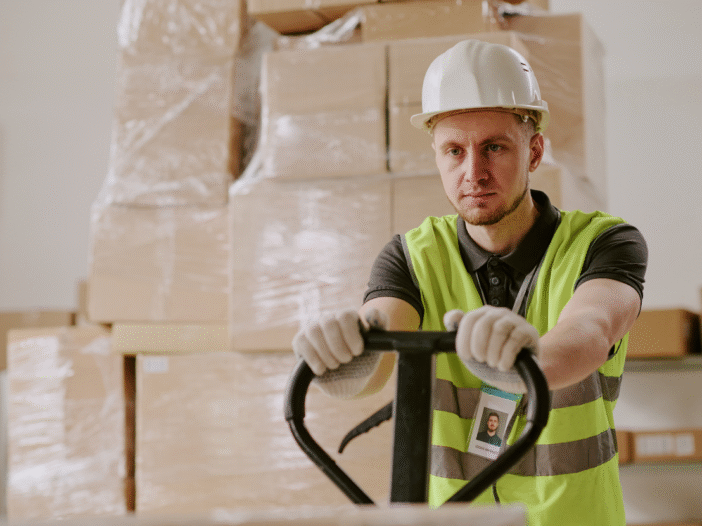
When it comes to safety in areas with substantial commercial vehicle activity, the importance of a thorough traffic management audit cannot be overemphasised. It forms a critical cornerstone in occupational health and safety, primarily due to the significant risks associated with vehicle movement and operations. However, understanding these risks and how to effectively manage them can be a complex task requiring specific expertise.
What is a workplace transport safety audit?
A workplace transport safety audit is an extensive, systematic review of all activities and processes related to commercial and other vehicle operations within a given premises or organisation.
This audit covers vehicles of all types, including vans, lorries, haulage vehicles, and both public and private transport. It evaluates not just the vehicle movement but also the safety of loading and unloading processes, heavy goods vehicle (HGV) operations, pedestrian access and movement, and the effectiveness of any safe systems of work implemented.
By providing an accurate, in-depth understanding of the various hazards and risks presented within a site or operation, a workplace transport safety audit supports organisations to develop and implement strategies to mitigate these risks effectively. This is crucial in ensuring the safety of all stakeholders, including employees, contractors, and the general public.
What does an audit cover?
The breadth and depth of a workplace transport safety are substantial. The audit assesses a wide range of risk factors associated with commercial vehicle operations. These include:
- Traffic movement – this involves analysing the flow of vehicles within, into, and out of the premises. It evaluates the sufficiency of the space available for vehicle movement, the clarity of directional signs, and the appropriateness of the routes taken within the site.
- Loading and unloading vans – the processes of loading and unloading goods can present significant risks, especially when dealing with heavy loads or mechanical lifting equipment. The audit examines these processes to ensure they follow best practices for safety.
- HGV operations – due to their size and weight, heavy goods vehicles pose significant risks. Therefore, their operation and movement within a site require careful scrutiny. This includes evaluating the competency of the drivers, the maintenance status of the vehicles, and the routes they follow.
- Pedestrian movement and access – one of the primary risks in areas with vehicle activity is the interaction between pedestrians and vehicles. The audit assesses this factor critically, focusing on areas with high pedestrian traffic.
- Safe systems of work – any safety procedures and protocols in place are also evaluated during the audit. This ensures they effectively mitigate risks associated with vehicle operations and that all workers adhere to them.
Should these risks exceed acceptable standards, steps must be taken to reduce both the likelihood and severity of the hazards.
Possible corrective measures could involve making alterations to site layouts, such as creating pedestrian-only areas, installing barriers, or creating new entrances and exits. Alternatively, operational considerations may be adjusted, such as modifying vehicle use and site access policies, or implementing bespoke solutions based on your organisation’s needs.
What is the audit process?
The audit process is meticulous and structured to ensure all aspects of workplace transport safety are thoroughly evaluated by Praxis42’s professional traffic management auditors.
Here is a step-by-step overview of what to expect from a typical workplace transport audit:
- Review of the current traffic management plan – the process begins with an in-depth review of the existing traffic management plan. This includes an evaluation of the procedures, protocols and controls currently in place.
- Site visits – auditors conduct site visits to observe firsthand the vehicle and pedestrian movement, assess the condition and suitability of infrastructure, and scrutinise vehicle-related activities, including loading and unloading processes.
- Documentation and analysis – all observations and findings are documented and analysed in detail. This provides an accurate understanding of the existing situation and helps in identifying potential risk areas.
- Workplace transport risk assessment – this step involves determining the severity and likelihood of identified risks, thereby helping to prioritise actions.
- Recommendations for improvement – auditors provide recommendations for improving the current traffic management plan based on their findings. These suggestions aim to mitigate identified risks and enhance overall safety.
What are the benefits of a workplace transport safety audit?
Undertaking a traffic management audit comes with several benefits:
- Risk identification and mitigation – the audit identifies potential risks and hazards associated with commercial vehicle operations, providing strategies for effective risk mitigation.
- Compliance with workplace transport regulations – ensuring safe vehicle operations is not only a moral obligation but also a legal requirement under occupational health and safety legislation. The audit helps organisations fulfil their legal responsibilities and avoid hefty penalties for non-compliance.
- Protecting reputation – accidents and incidents related to vehicle operations can harm an organisation’s reputation. A workplace transport safety audit helps prevent such situations, thereby safeguarding the organisation’s image.
- Boosting employee confidence – demonstrating a commitment to safety can improve employees’ morale, fostering a healthier and more productive work environment.
Workplace transport safety audits are a vital part of ensuring a safe and efficient environment where vehicle movement and operations occur. By highlighting risks and providing recommendations for improvement, they offer a clear path for organisations to follow.
Implementing the right traffic management strategies contributes significantly to preventing accidents, protecting employees, and safeguarding the overall business.
Learn more about Praxis42’s traffic management services, including undertaking assessments where relevant, assistance to develop site rules, reviewing site layouts, devise monitoring systems or improve site operations.

Adam Clarke
Managing Director (Consulting)
